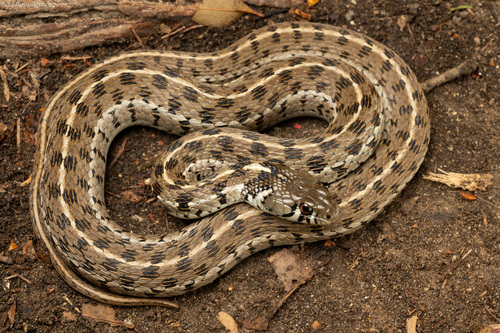
Checkered Garter Snake
The Checkered Garter Snake, with its striking green-black checkerboard pattern, thrives in wetlands of the American Southwest. This agile, non-venomous snake plays a crucial role in controlling amphibian populations, showcasing a fascinating interplay of camouflage and predation.
Low
Aggression
Least Concern
Conservation Status
Unknown
Population Trend
Characteristics
Thamnophis marcianus, commonly known as the Checkered Garter Snake, is found in grassy fields and wetlands of the southwestern United States and Mexico. It exhibits a distinctive checkerboard pattern of green and black squares along its back. This non-venomous snake is diurnal, feeding on amphibians and small fish.
Distribution Range of the Checkered Garter Snake
Thamnophis marcianus, commonly known as the Checkered Gartersnake, is native to North America. It is primarily found in the southwestern United States, particularly in states such as Texas, New Mexico, and Arizona. Its range extends into northern Mexico, including regions such as Chihuahua, Coahuila, and Tamaulipas.
Checkered Garter Snake's Habitat
Environmental Conditions
The Checkered Gartersnake typically inhabits a variety of environments. It is often found in semi-arid regions, preferring areas near water sources such as streams, ponds, and rivers. These environments provide the necessary humidity and prey availability. The climate in these regions can vary, but it generally includes hot summers and mild winters.
Ecological Niche
As a semi-aquatic snake, Thamnophis marcianus occupies a niche where it can exploit both terrestrial and aquatic prey. It feeds primarily on amphibians, fish, and small invertebrates. The snake's ability to thrive in diverse environments such as grasslands, deserts, and riparian zones demonstrates its adaptability. Variations in habitat can occur due to regional adaptations, where some populations may be more terrestrial or aquatic depending on local conditions.
Copyright @ Nature Style Limited. All Rights Reserved.
 English
English